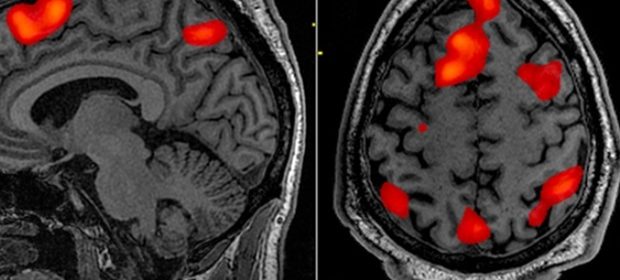USC’s new center aims to address unmet needs in neurodegenerative diseases of the eye and brain

Could a new paradigm in digital health treat blinding disorders and possibly also be a conduit for treating other parts of the brain? A multi-disciplinary team of world-renowned researchers at USC are exploring this exciting possibility. Building on decades of knowledge, the success of the world's first FDA-approved retinal implant to restore sight to the blind, and USC's existing investments, Drs. Mark Humayun, Gianluca Lazzi and Arthur Toga are teaming up to lead a new center (Center for Neuronal Longevity; CNL) to tackle the formidable challenges of neurodegenerative diseases of the eye and brain.
The center is a cross-campus, multi-school venture that brings together the Keck School of Medicine, Viterbi School of Engineering, and the School of Pharmacy. Housed in the USC Ginsburg Institute for Biomedical Therapeutics led by Humayun, the USC Institute for Technology and Medical Systems led by Lazzi, and the USC Stevens Neuroimaging and Informatics Institute led by Toga, CNL also seeks to further USC's commitment to diversity and inclusion as well as workforce development through training, education, and outreach programs and includes external scientific and industry advisory boards.
CNL also has a focus on developing close ties with industry leaders with the goal to help accelerate development and translation of groundbreaking technologies into the clinic. Twenty/Twenty Therapeutics (a joint venture between Santen and Verily, an Alphabet company), focused on digital eyecare, exemplifies such a key industrial partnership. Dr Dimitri Azar, CEO of Twenty/Twenty Therapeutics shares this enthusiasm and said "we are gratified to be an industrial partner of the USC Center for Neuronal Longevity led by Dr. Mark Humayun. Mark has been a leader in vision restoration, and we plan to collaborate with this exciting new center to develop novel therapies for patients who are experiencing vision problems."
While neurodegenerative diseases affecting the brain or peripheral nervous system are complex, all are caused when nerve cells stop working or die. Currently available therapies slow the progression of some neurodegenerative disorders, but none can prevent, stop or reverse the damage and many other disorders cannot even be slowed down.
Using a pioneering approach, the USC researchers are delivering electromagnetic stimulation through a minimally invasive contact lens-like platform to slow, stop, or even reverse the damage to nerve cells in the eye. Early preclinical studies have shown surface stimulation of the eye slows progressive blindness. And while their current focus is the eye, the researchers' long-term goal is to apply the same technologies to alleviate neurodegenerative disorders of the brain, such as Alzheimer's disease.
The Center for Neuronal Longevity will deepen our understanding of neurodegenerative diseases – and transform the way we treat them. By combining the work of three USC schools, interdisciplinary researchers will come together and explore new therapies that use cutting-edge technologies – and draw on those already being used to unravel the workings of the eye and brain. We are incredibly excited to see the medical breakthroughs that will give new hope to people everywhere."
Carol L. Folt, USC President
The current work builds on previous studies by Humayun and Lazzi to develop retinal implants to restore sight for patients with near total blindness. In those devices, electrical stimulation is used to bypass damaged neurons, rather than try to prevent the loss of neurons. Combining these efforts with the imaging and connectomics work of Toga and the USC Stevens Neuroimaging and Informatics Institute provides a unique scientific opportunity. In 2016, Humayun received a National Medal of Technology & Innovation-;the nation's highest honor in technology innovation-;from President Obama for his work to restore vision in blind patients.
"Leveraging USC's world-class expertise in ophthalmology, bioelectronics, neuroimaging, molecular biology, and outstanding existing infrastructure, we are now building on our retinal implant success and developing the science, medicine, and engineering behind what we think has the potential to be leapfrog digital health technology for prevention or slowing down neurodegenerative diseases," said Humayun, who is Director of USC Institute for Biomedical Therapeutics and Co-director of the USC Roski Eye Institute.
Keck School of Medicine of USC
Posted in: Medical Science News | Medical Condition News
Tags: Alzheimer's Disease, Blindness, Brain, Connectomics, Education, Electromagnetic, Eye, Imaging, Implants, Medicine, Molecular Biology, Nerve, Nervous System, Neurodegenerative Diseases, Neuroimaging, Neurons, Ophthalmology, Pharmacy, Preclinical, Research, students, Therapeutics, Translation
Source: Read Full Article